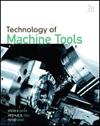More and more automakers are focusing on interior craftsmanship as they seek appearance goals that set their products apart from the competition. "Regardless of how well a car is engineered, if the fit and finish doesn't match or any of the components look inexpensive, most consumers believe that the entire vehicle is lacking in quality," claims Douglas DelGrosso, president and chief operating officer of Lear Corp. (Southfield, MI).
According to the Warwick Manufacturing Group (Coventry, England), the quality of a vehicle's craftsmanship is more important to owners than its drive--or even reliability--when influencing brand loyalty in the highly competitive premium car segment. Repeat purchasing is directly linked to consumer satisfaction and craftsmanship.
"Craftsmanship is about quality of design execution that gives the product the appearance of being well made and well functioning at its very early interaction with the customer," explains DelGrosso. "Perception is not always conscious, but perception can be influenced."
As the result of extensive consumer research, DelGrosso says Lear is relentless about "establishing appearance goals for interiors based on five harmony and craftsmanship principles--precise appearance, harmonious integration of parts, appropriate materials, functional interface and perceived spacious environment."
Lear engineers have developed new manufacturing techniques, such as a two-shot molding process, and new materials, such as Spray PUR polyurethane applications, to improve craftsmanship, design flexibility and reliability for automakers.
Two-shot technology is an injection-molding process that first shoots a material on a substrate, then moves or rotates to shoot a second color or material--all in one mold cycle. "This produces a part that can be a combination of two different colors, materials or textures," explains DelGrosso. With one molding cycle and reduction of assembly time, there can be considerable cost savings, as well as increased design flexibility and craftsmanship.
Spray PUR is the process of spraying polyurethane over a tool for a soft skin automotive part. The urethane is typically two components: icocyanate plus polyol, which react in the tool or mixing head to form one polyurethane skin. "The benefits are improved craftsmanship, with superior grain definition and low gloss, as well as a softer touch and multi-tone option," says DelGrosso. "The finish also offers excellent performance, durability and scratch resistance."





